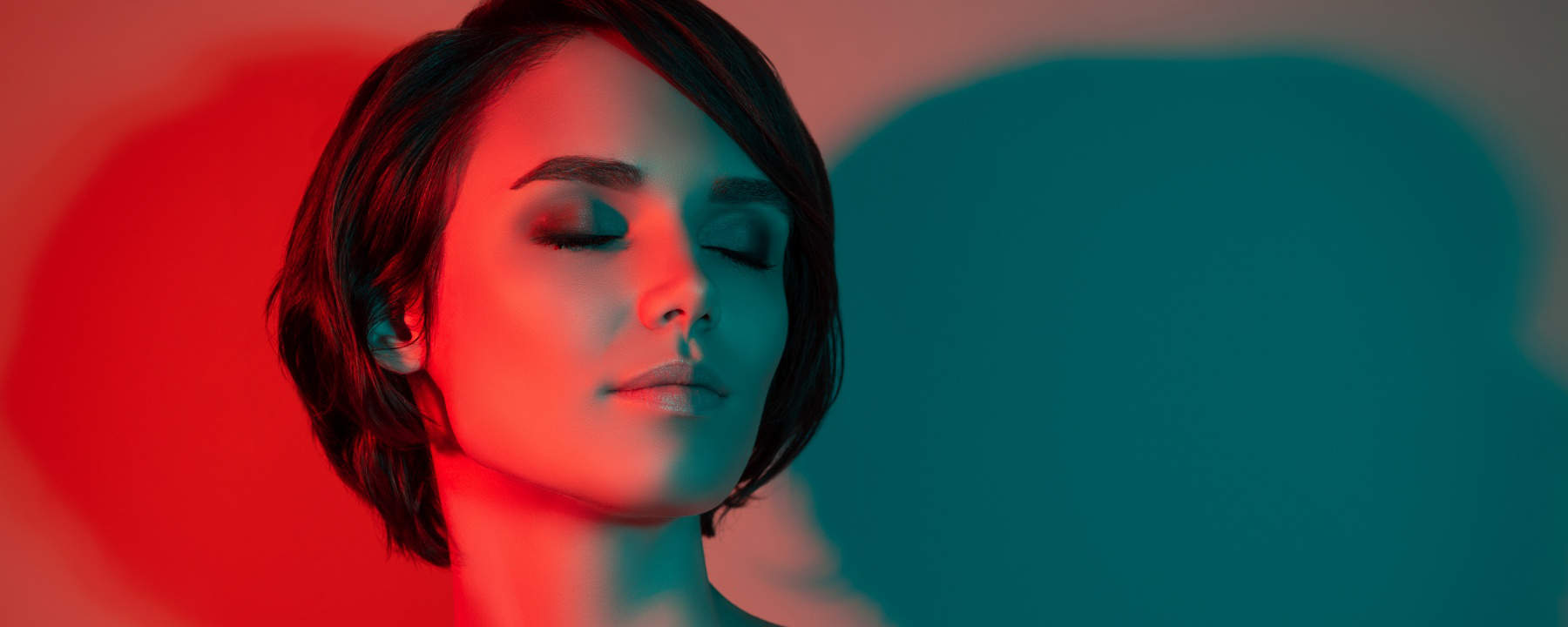
Sunlight
Sunlight and health go hand in hand
Sunlight is the source of life on Earth. But it is not only the sun that is responsible for our well-being. Artificial light is also playing an increasingly important role in our everyday lives.
When on the lookout for new trends in the beauty and healthcare industry, it is only natural to turn to Hollywood. Very often it's the stars of the big screen who are keenest to find groundbreaking and seemingly new ways to capture eternal beauty. A glance at reports in the yellow press reveals that “light” is currently a hot topic, including the use of LED masks as a weapon in the fight against aging skin.
But before rushing out to grab one of these masks, it is a good idea to consult your doctor. Light, whether naturally via the sun or artificially in the form of lightbulbs, is not only beneficial for your health – it can also damage it. The right dosage in an appropriate way is essential here.
Hippocrates knew it already
The point we are trying to make: using light this way is not just an American fairy tale. It goes back way further than this. It's not a recent discovery that the sun, and light in general, have a major effect on us humans. Hippocrates (460–370 BC), already discussed the effects of the sun and light on people in his treatise “On Airs, Waters and Places”. He wrote that people from the sunnier regions of the world have a more positive attitude and character and are less susceptible to diseases. Sunshine puts us in a good mood. True. A lack of sunshine kills your mood. Also true for many people.
Science has traveled a long and instructive path from Hippocrates to the present day, with proven insights and proofs of everything light can do – apart from driving away the darkness, of course. And research is still ongoing.
There was a breakthrough of sorts starting in the 1870s, when ultraviolet light was discovered to have an inhibiting effect bacteria. This knowledge led to the Danish physician Niels Ryberg Finsen receiving the Nobel Prize in Physiology or Medicine in 1903.
Light makes its way into medicine
The citation for the award stated “in recognition of his contribution to the treatment of diseases, especially lupus vulgaris, with concentrated light radiation, whereby he has opened a new avenue for medical science.”
Well, thus it has now been established that the thing is Danish.-
Niels Ryberg Finsen, Danish medical practitioner - Source: From Nobel Lectures , Physiology or Medicine 1901-1921 , Elsevier Publishing Company, Amsterdam, 1967
Here's a brief look at the effects of sunlight on health and well-being:
We owe our daylight to the fact that every square meter of the sun emits more light than a million light bulbs and that the sunlight which reaches the Earth is diffused by our planet's atmosphere.
- sunlight stimulates our breathing, blood circulation and metabolism
- When there is enough sunlight, the body releases more of the happy hormone serotonin, which puts people in a better mood and makes them feel calmer, more satisfied and happier
- Sunlight inhibits the creation of the sleep hormone melatonin that makes us feel tired
- The sun’s rays stimulate the formation of nitric oxide in the skin, which in turn encourages the expansion of blood vessels, which in turn reduces arterial pressure and lowers blood pressure. This reduces the risk of heart attacks and strokes over the long term
From 1895 onward, he used concentrated ultraviolet light beams to treat patients with lupus vulgaris, with some success. Lupus vulgaris is a form of tuberculosis (TB) that attacks the skin, especially in the face and neck. More facts about Niels Ryberg Finsen can be found at NobelPrize.org
However, it is not only those who have issues with skin diseases whose well-being can be improved by light therapy. Warming infrared light can, for example, provide relief from back problems.
More influence than you might think – light sets the pace
In the early 1980s, researchers and physicians at the US National Institute of Mental Health (NIMH) discovered that light has a major impact on the human body's internal clock. Light was identified as being the pacemaker of life.
The blue light generated by the sun has a significant impact on our lives. It essentially serves as our inner clock. When we see, perceive and really soak up the blue light of the sun during the day, this triggers various processes and hormones in the body, enabling us to navigate the day feeling fit, awake and healthy. When it is bright daylight outside, our bodies produce more serotonin and cortisol, which in turn prevents our sleep hormone, melatonin, from being produced and released. As the level of blue light decreases starting in the afternoon, the processes within the body are reversed, tiredness and sleep enter the frame, and we can rest and recover.
Differences in light intensity in LUX (source: BfS)
- Overcast summer's day approx. 20,000 lx
- Overcast sky, midday in winter approx. 6,000 lx
- Office lighting approx. 500 lx
- General lighting in living spaces approx. 100 – 300 lx
There are two factors that can throw our inner clocks – our day/night or diurnal rhythm – out of sync. On the one hand we have the seasons and the resulting differences in sunshine duration and intensity. A possible consequence is: many people's moods are depressed by darkness, particularly in autumn and winter. Experts talk about the winter blues or the mood subsyndrome known as seasonal affective disorder (SAD), which occurs temporarily, but not continuously, over a long period. There is quite simply not enough light.
The second factor is an issue caused by humans, and it also plays a major role: light pollution. Artificially generated light resets the body's internal clock and causes chaos. This problem is found particularly in big cities. The nights there are just brighter than nature ever intended. Shift work also affects our body clocks.
A lack of energy, sluggishness and exhaustion
One possible way out of this “light crisis”, which can cause physical and mental problems, is a special light therapy, which can set our bodies back on the right track and following the right cycle.
In essence, you can trick your body and your brain yourself. Sunlight can be simulated using special lamps. You need to use light sources between 2,500 and 10,000 LUX. The best time to take a light bath is between 7 am and 10 am. Using the highest LUX setting, just 30 minutes per day is enough to notice an improvement.
It is important that the light is absorbed through your eyes. Absorption via the skin – as when vitamin D is formed – is not enough for this type of therapy to have positive results. You can sit down to tasty breakfast or read the newspaper while “bathing” in the light. However, light therapy is not a like-for-like replacement for daylight. There is simply no substitute for the strength of sunlight.
Although light therapy is regarded as safe with only occasional side effects, it is essential to consult your doctor about the form of light therapy to use if you have any issues with your skin or your eyes, or if you are taking certain types of medication.
Vitamin D – When the sun gets under your skin
Sunlight is the most important natural source enabling the body to produce vitamin D. Strictly speaking, it’s not a vitamin – it's actually a hormone.
MoreChocolate and sun, both make us happy!
Many people suffer from the winter blues in the months that have less sunshine. But there are ways to escape this temporary sense of melancholy. Feeling happy is what counts.
MoreResearch on the topic of light continues to be an exciting field. Light planning is the key takeaway, not least when it comes to creating better moods in both the workplace and the home. Research is also continuing into the more intensive use of light in medicine and treatments.
While our main focus is on the sun, we are also interested in artificial light, its effects and capacity. We're following the light, so that our sunny side can continue to shed light in the darkness.


